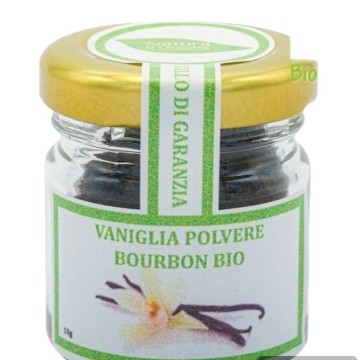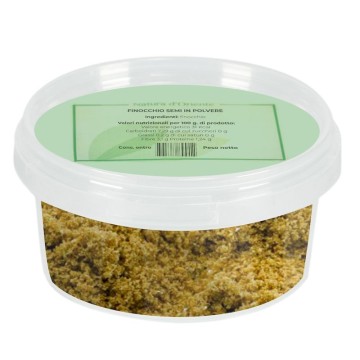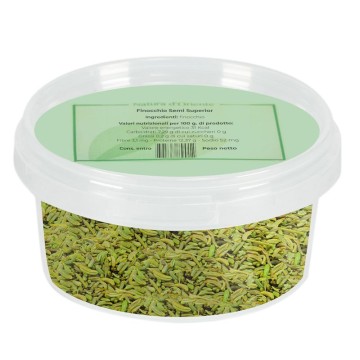The berries of the juniper plant are historically known for their taste, in cooking, and for their virtues of well-being as a natural remedy. From a food point of view, they give a penetrating and slightly resinous aroma, with woody notes; a flavor that mixes sweet, pungent and sour, similar to pine. They are used in small quantities as a spice, a flavoring agent that makes dishes even richer in tasty, natural and "ancient" aromas and tones in some meat recipes.
Juniper berries: properties and benefits
Juniper berries boast precious digestive and purifying properties, excellent for facilitating gastrointestinal transit. The berries contain a compound, juniperin, which can increase the production of gastric acids and promote digestive function. It can also be useful for stimulating the appetite. Juniper berries have diuretic properties, which can help drain excess fluids. They are therefore an excellent ally for wellness in fighting water retention and the feeling of swelling. Since they work as diuretics, they can help counteract excess uric acid and are useful for the functionality of the urinary tract. These berries make available the antioxidant terpenes, which can promote joint functionality and provide natural relief to the joints. The natural antioxidant properties, thanks to the presence of polyphenols, allow these molecules to react and neutralize free radicals, reducing oxidative stress and its harmful effects on the body's cells. Externally, the berries have historically been used as a soothing agent for skin irritations, but in the form of juniper berry extract or essential oil. Juniper berries contain plant compounds, including antioxidant flavonoids, monoterpenes and coumarins, which can offer benefits for wellness. Their nutritional properties are also available in dried juniper berries, excellent for infusions.
How to use juniper berries in cooking
The Mediterranean gastronomic tradition has used juniper cones for centuries, for various preparations. Unlike other berries, juniper is used in recipes in very small quantities, used to flavor with its pine-like scent and taste. Its astringent taste with citrus nuances (sometimes compared to rosemary), is a common ingredient in German cuisine. The berries are commonly used dried, incorporated into dishes whole or chopped. For an even more pungent flavor, the berries are often crushed before adding them to a sauce or marinade. For a more delicate tone, the berries can be toasted, but be careful not to burn them: if overcooked, they will take on a bitter taste and become inedible. To crush the berries, use about a tablespoon as needed (or according to the recipe) with a pestle or meat tenderizer. Once flattened, you can place them on a cutting board and chop them finely, before adding them to the dish or marinade. Often in recipes, to enhance the light citrus flavor of juniper berries, the addition of a fruit such as apples or plums is called for. Remember that juniper berries in cooking are spices useful for flavoring and seasoning but should be removed after cooking, often by filtering sauces and reductions. The aromatic properties are also available in dried juniper berries, excellent for infusions as well as for use in cooking.
Meat: Juniper berries are usually used on white meats, historically in recipes dedicated to game. They pair well with lamb or mutton, wild boar, rabbit and pork. Juniper is also a good flavouring for roast duck and is sometimes used for beef. You can rub chopped juniper berries on meat before roasting, perhaps adding a little flavourful garlic. A famous Alsatian dish, choucroute garnie, is sauerkraut with sausage and potatoes, seasoned with pepper and juniper berries.
Savoury and sweet recipes: These spicy and aromatic juniper berries can be used to add a unique flavour to casseroles and fillings. In some recipes for salmon and pickled fish they can add a special touch. They can also be used in sweet dishes, but their tart flavour usually needs to be blended with culinary skill. In Scandinavian and Anglo-Saxon tradition, jams are made with juniper berries and rhubarb, juniper cakes or flavoured dark chocolate.
Sauces: They can become an ingredient to add flavour to marinades, and toblends with similar herbs and spices. They can be added to ground chili peppers, to give a rustic flavor that pairs well with smoked chili peppers.
Drinks: The berries are famous for being used to create gin liqueur, giving the drink its distinctive juniper flavor - originally known as jenever ("juniper") in the Netherlands. They can be used to create juniper syrups, liqueurs or schnapps, in many cases by macerating the berries with alcohol/schnapps and sugar. The berries are also a popular ingredient in creating specialty and flavorful cocktails.
Infusions: Juniper berry tea can be made using crushed juniper berries (1 teaspoon per cup); steep for about 5-7 minutes in boiling water. Useful as a diuretic, in case of digestive disorders and abdominal swelling.
Grilled fillet in flavored sauce
Ingredients: 1 kg of beef fillet (divided into 4 slices) - 500 ml of full-bodied red wine - 30 g of shallots - 20 g of butter - 6 juniper berries 6 - 3 cloves - 2 bay leaves - black pepper to taste - 1 pinch of fine salt - 1 sprig of rosemary - 3 sage leaves - 2 sprigs of thyme - 15 g of 00 flour - 2 tablespoons of extra virgin olive oil Preparation Take the meat and place it in a baking dish, sprinkle the fillets with olive oil and leave them to marinate. In the meantime, create the flavored wine sauce. Finely chop the sage, rosemary and thyme, clean the shallot and chop it finely. Pour the red wine into a large pan, add the chopped aromatic herbs, shallot, cloves and juniper berries. Season with pepper. Add the bay leaves to the wine and let it dry over high heat until it reduces - about 15 minutes. Filter the reduction obtained with a strainer, collecting the sauce and setting it aside. In another pan, melt the butter and add the flour, stirring to eliminate lumps (use the whisk). Place over low heat, pour in the filtered wine slowly, stirring until the mixture thickens. Turn off and set aside in a warm place. Heat the grill and, when it is very hot, place the 4 fillets on it, making sure to turn them after about 2 minutes. Cook to your preferred point and then plate and salt the meat, sprinkling the fillets with the sauce at the end. The grilled fillet in flavored wine sauce is ready!
Origins and History of Cultivation
The juniper plant was already known to the ancient Romans, who included the berries among the essential spices, since they were considered a substitute for pepper. Juniper flavored game meat, while its wood was used in spit or grill cooking, because it infused the meat with a pleasant resinous aroma. The berries were used in cooking and for therapeutic purposes also in ancient Egypt, ancient Greece, and have been found in archaeological excavations also in India and other Asian cultures. They were known as a digestive tonic, for stimulant, diuretic and sudorific effects. In European folk beliefs, juniper leaves and branches hung above the door of the house or stable were good luck, and the wood was used in the pole to stir the polenta. Juniper branches fed the fire when someone in the house was suffering from the flu, and the freshly picked leaves were placed on red-hot plates of the fireplace, to spread the beneficial aromatic effluvia in the room. In the nineteenth century, Abbot Kneipp even suggested wrapping the sick person in a blanket, heated by the vapors of juniper branches and berries. A suggestion that has gone down in the history of popular phytotherapy as Doctor Kneipp's cloak.
Plant and berries
Juniperus communis, the juniper plant, is an evergreen shrub that belongs to the Cupressaceae family. The tree grows in many parts of the world, including Europe, North America and Asia, distributed throughout the Northern Hemisphere. It can vary in appearance, growing as low and broad as a shrub or as tall as a tree. The young leaves are needle-like, while when mature they become pointed and widened. The male and female reproductive structures are usually divided into separate plants. It produces seeds, incorrectly known as juniper berries or juniper berries, which are actually female seed cones - the plant being a type of conifer (like pine). They mature in one to three seasons and usually contain 3 seeds. The fused scales are fleshy and make them look like a berry. In fact, at the food level they have their owndifferent ages, are used as a bitter spice - they are the only spice that comes from a conifer. Juniper berries can show various colors, although most are deep blue or reddish brown.
Juniper berries: side effects and contraindications Although juniper berries are generally safe, to avoid unwanted effects, it is preferable to avoid excessive consumption. Taking high doses can cause irritating effects on the mucous membranes, nausea, diarrhea and gastrointestinal disorders. Avoid berries in case of specific allergy to juniper, kidney and gastro-duodenal diseases, intestinal inflammation. In addition, they could interact negatively with some diuretic or hypoglycemic drugs. Juniper berries are not recommended for pregnant or breastfeeding women.











 No reward points for this product.
No reward points for this product.
















